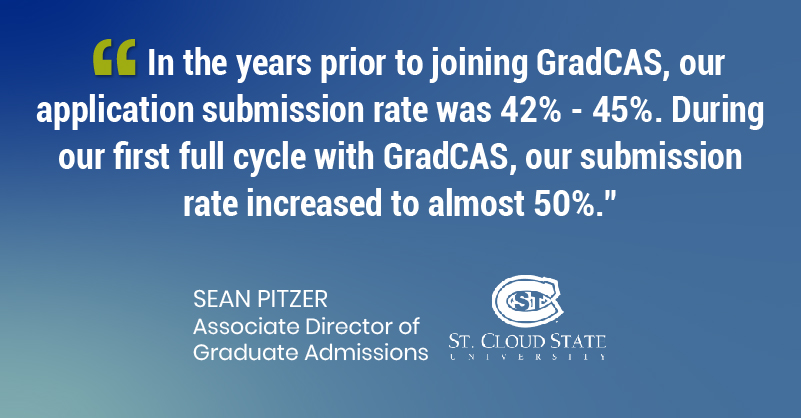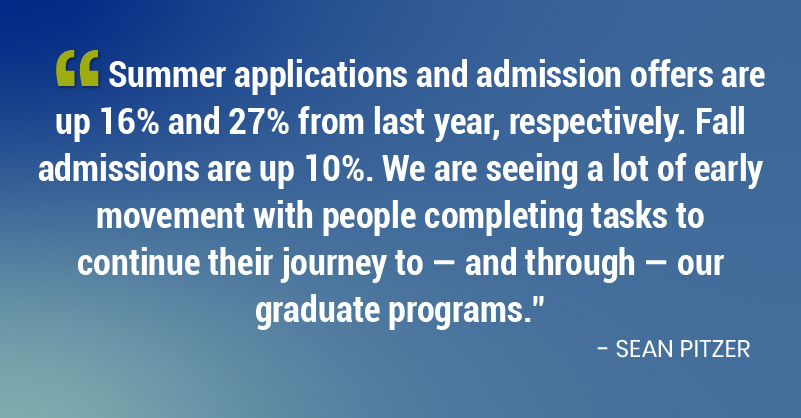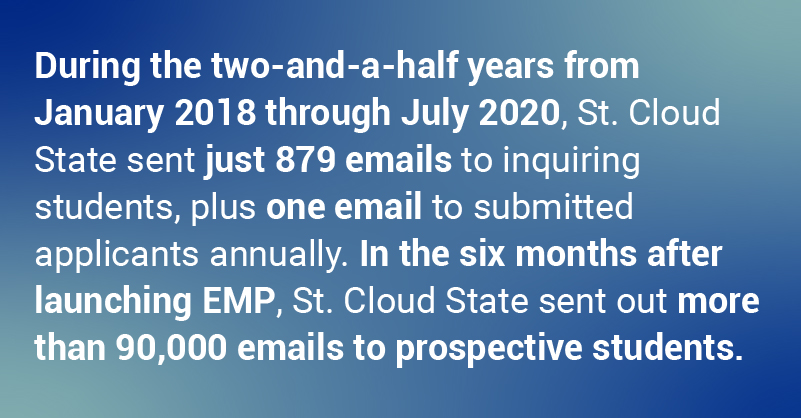“GradCAS has opened us up to new audiences,” Pitzer said. “As a regional comprehensive university, our fundamental mission has been to serve the region and state; as we have continued evolving to meet the needs of an increasingly interconnected global society in the 21st century, that footprint has expanded nationally and internationally. Liaison complements institutional strategies by driving potential applicants to GradCAS, where they have an opportunity to search for programs of interest. If we have what they’re searching for based on academic offerings, location, delivery method, degree type or admission cycles, their query brings up St. Cloud State and puts our name at the forefront of their consciousness.”

Pitzer said St. Cloud State’s use of GradCAS as its application review system has been a game changer.
“GradCAS allows us to communicate very quickly by aligning institutional communication strategies alongside Liaison’s communication programming to prospective and in progress applicants, as well as admitted students,” he explained. “The increased communication means we have a lower application abandonment rate, an increased application submission rate and a faster admission offer or decision notification. The tool is quite simple to use and easy to manage.”
And Pitzer has noticed that more students are submitting applications earlier in the cycle now: “Work that tended to happen in June, July and August appears to be happening in February and March.”

Opening “the fourth dimension”
According to Pitzer, being able to communicate faster with prospective students and get decisions out quicker is making a difference at St. Cloud State. Taking advantage of Liaison’s Enrollment Marketing Platform (EMP™) is part of his strategy for making that happen. EMP is a complete marketing and CRM solution that transforms how schools manage recruiting and admissions.
“GradCAS and EMP have opened the fourth dimension for our graduate students,” Pitzer said. “GradCAS imports data to EMP multiple times daily, immediately updating student information while setting up analysis mechanisms based on activities and behaviors. At each stage, a communication is delivered overnight via email, text or snail mail urging progression to the next stage, whatever that may be.
“We leverage check-listed items on a personalized URL, or “PURL,” so applicants know exactly what’s missing and admitted students know their next steps. No transcripts uploaded? No check mark. No recommendation letters received? No check mark. Students always know the status of their file, which in many cases allows us to deflect inbound phone calls and emails into the self-service environment. Staff are processing files instead of answering emails to see if a transcript or recommendation has arrived.”
St. Cloud State’s email read rate and consequential engagements are “wild to see,” Pitzer said.
“I have learned that applicants and admitted students will do exactly what you ask them to do and their behaviors are highly predictable. They are hungry to consume our information as they plan their futures. Fast, useful and informative communications are critical, and we managed to hit a sweet spot with speed and content.”





